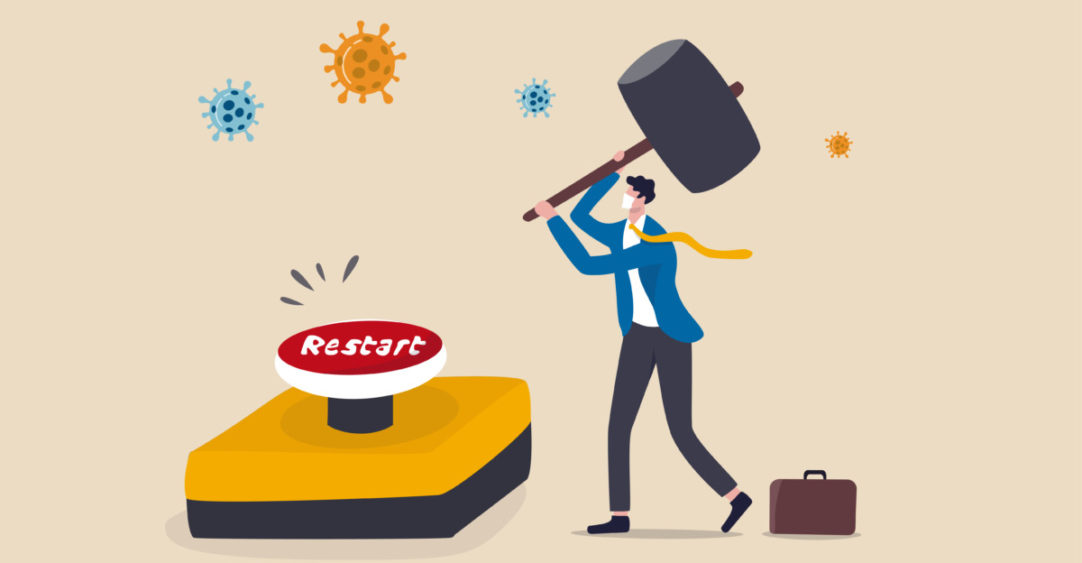
How COVID-19 May Reshape the Built Environment – LEED’s Response to Safe Re-opening
As we seek more information on the safest way to re-open our buildings during this pandemic, the U.S. Green Building Council (USGBC) has launched a set of pilot credits under the Leadership in Energy and Environmental Design (LEED®) green building rating system. These pilot credits provide sustainable best practices relative to disinfecting and cleaning, HVAC operations, plumbing operations, and workplace re-occupancy protocols.
Buildings seeking LEED certification can attempt these pilot credits for gaining additional points under the Innovation credit category, while those buildings not seeking a certification can follow credit guidelines for enhancing return-to-office safety.
Safety First: Cleaning and Disinfecting Your Space measure
This is a policy-based measure where owners and facility managers can adopt a policy to implement certain procedures and employ green cleaning best practices to ensure a healthier indoor environment, thereby enhancing employee safety. In addition, the policy also requires training of cleaning personnel and educating the building occupants.
This measure has five main components:
- Product Selection: USGB recommends using disinfecting products that are listed on EPA’s List N for use against SARS-CoV-2. In addition, cleaning chemicals, hand soaps, paper towels, etc. must meet the EPA Safer Choice Standard, Green Seal Standards, or the UL Ecologo standards.
- Procedures on Cleaning and Disinfection: Procedures for cleaning must meet the CDC guidelines as well as EPA requirements on Reopening Guidance for Cleaning and Disinfecting Public Spaces, Workplaces, Businesses, Schools, and Homes.
- Protection for Cleaning Personnel: All cleaning personnel must use proper PPE including eye protection, masks, gloves, and gowns.
- Training of Cleaning Personnel: Cleaning personnel must be trained for properly using the cleaning products and equipment.
- Occupant Education: Occupants must be educated on the steps that are being taken to clean and disinfect their surroundings.
Safety First: Re-enter Your Workspace measure
This is a tools-based measure where owners and facility managers can assess and plan for occupant re-entry. This measure also provides an opportunity to measure and track progress once the space has been re-occupied. In addition, this measure is based on the AIA Re-Occupancy Assessment Tool and allows transparent reporting leading to continual improvement.
This measure requires the following:
- Using the AIA Re-occupancy Assessment Tool.
- Creating an O&M plan that addresses building preparation, workforce preparation, access control, social distancing, green cleaning, touch point reduction, and communication.
- Maintaining a Daily Journal which can be accessed by building management and the occupants to keep data transparent.
Safety First: Building Water System Recommissioning measure
Owing to month-long building closures and plumbing systems not being used regularly, degraded water quality and legionella build-up are a cause of concern for building owners and facility managers. This measure considers the guidelines set by the CDC, EPA, and local water and public health authorities and requires developing and implementing a water management plan.
The water management plan must be developed in accordance with ASHRAE Standard 188-2018: Legionellosis: Risk Management for Building Water Systems (BWS). In addition, before occupancy, the building water systems must be tested by a water treatment professional for discoloration, chlorine, legionella, lead, copper, and disinfectant byproducts to ensure meeting the state and federal requirements. If the water quality does not meet the state and federal requirements, water-flush out and plumbing fixture cleaning plans must be developed and implemented.
After re-occupancy, the building water systems must be tested regularly for temperature, pH, and disinfectant levels to ensure proper maintenance.
Safety First: Managing Indoor Air Quality During COVID-19 measure
This measure is aimed at ensuring that indoor air quality systems are operating as designed, increasing ventilation and infiltration where possible, and ensuring physical distancing of occupants in accordance with CDC’s guidance is being followed.
This measure provides guidance on increasing the percentage of outdoor air, increasing airflow supply to occupied spaces, disabling demand control ventilation, considering natural ventilation, improving central air filtration by using MERV-13 filters or higher and replacing them regularly, running ventilation systems when building is unoccupied, and considering using HEPA filters.
In addition, the measure also requires identifying any mechanisms for monitoring and evaluating indoor air quality and developing an O&M plan that specifically addresses how the air quality will be managed as long as the pandemic lasts.
Safety First: Pandemic Planning measure
This measure can aid cities and communities in their response to a pandemic like the COVID-19. The plan requires developing a task force that will be responsible for evaluating different pandemic-related scenarios and advise the decision makers on short and long-term strategies.
The plan must be capable of evaluating healthcare system readiness, domestic response, and incident management, among other existing procedures and policies. The plan must also include training and education for community partners and other stakeholders.
Safety First: Social Equity in Pandemic Planning measure
This measure considers equity issues during the pandemic preparedness, planning, and response processes. This measure requires that the local government must appoint a local equity officer who will be responsible for ensuring that equity is considered in the pandemic response process.
In addition, a Pandemic Community Advisory Group must be formed who will be responsible for gathering input on an on-going basis for demographic and socio-economic diversity of the city or community. Public communication campaigns, education campaigns, and outreach campaigns must be developed and implemented to share pandemic-related information to ensure information is being distributed in an equitable manner to all residents, irrespective of demographic and socio-economic status.
More information on the LEED Safety First pilot credits can be found on the USGBC COVID-19 resource page.







